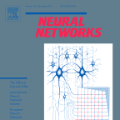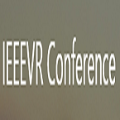
Digital twin technologies help practitioners simulate, monitor, and predict undesirable outcomes in-silico, while avoiding the cost and risks of conducting live simulation exercises. Virtual reality (VR) based digital twin technologies are especially useful when monitoring human Patterns of Life (POL) in secure nuclear facilities, where live simulation exercises are too dangerous and costly to ever perform. However, the high-security status of such facilities may restrict modelers from deploying human activity sensors for data collection. This problem was encountered when deploying MetaPOL, a digital twin system to prevent insider threat or sabotage of secure facilities, at a secure nuclear reactor facility at Oak Ridge National Laboratory (ORNL). This challenge was addressed using an agent-based model (ABM), driven by anecdotal evidence of facility personnel POL, to generate synthetic movement trajectories. These synthetic trajectories were then used to train deep neural network surrogates for next location and stay duration prediction to drive NPCs in the VR environment. In this study, we evaluate the efficacy of this technique for establishing NPC movement within MetaPOL and the ability to distinguish NPC movement during normal operations from that during a simulated emergency response. Our results demonstrate the success of using a multi-layer perceptron for next location prediction and mixture density network for stay duration prediction to predict the ABM generated trajectories. We also find that NPC movement in the VR environment driven by the deep neural networks under normal operations remain significantly different to that seen when simulating responses to a simulated emergency scenario.
翻译:暂无翻译




